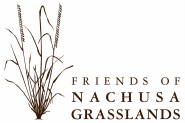Milkweed Family (Asclepiadaceae)
common milkweedAsclepias syriaca
Monarch munchies Milkweed leaves are famous for feeding the caterpillars of monarch butterflies. The compounds in the white sap of milkweeds make the caterpillar and the adult butterfly taste nasty to predators, such as birds. Once a bird tastes an orange monarch it likely won’t eat any similar orange butterfly. This protects the tasty viceroy butterfly which closely mimics the monarch but whose caterpillars eat willows and cottonwood leaves. In addition many pollinators use the nectar of milkweeds for food and then predators, such as crab spiders and mantises, are attracted to the insects that come to the nectar. Meet my family Illinois has many other species of less common milkweeds such as: whorled, sand, tall green, purple, poke, swamp, and the orange butterfly milkweeds. They are all good for monarch butterfly caterpillars. That is why the new “Illinois Wildflower” is “the milkweed” (without specifying which species). There are several other critters that eat the leaves: the milkweed tussock moth, the milkweed beetle, and the large milkweed bug. Scientific name origin The genus name is from the famous Greek character, Asclepius (possibly a real person) who is credited in western culture with inventing medicine. If a real person, he was later elevated to divine god-like status. |
